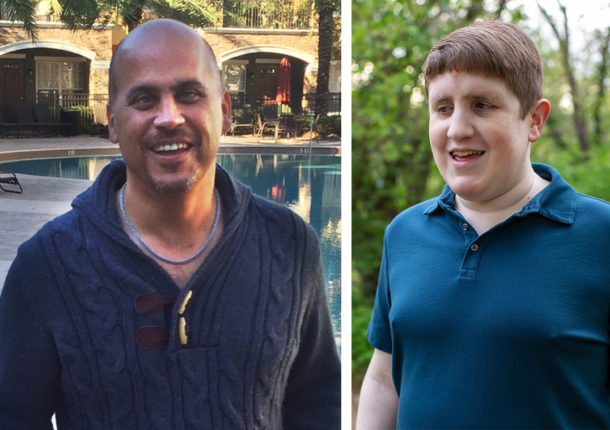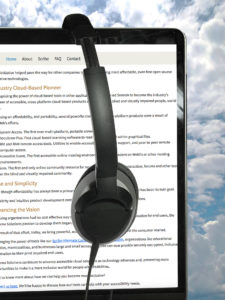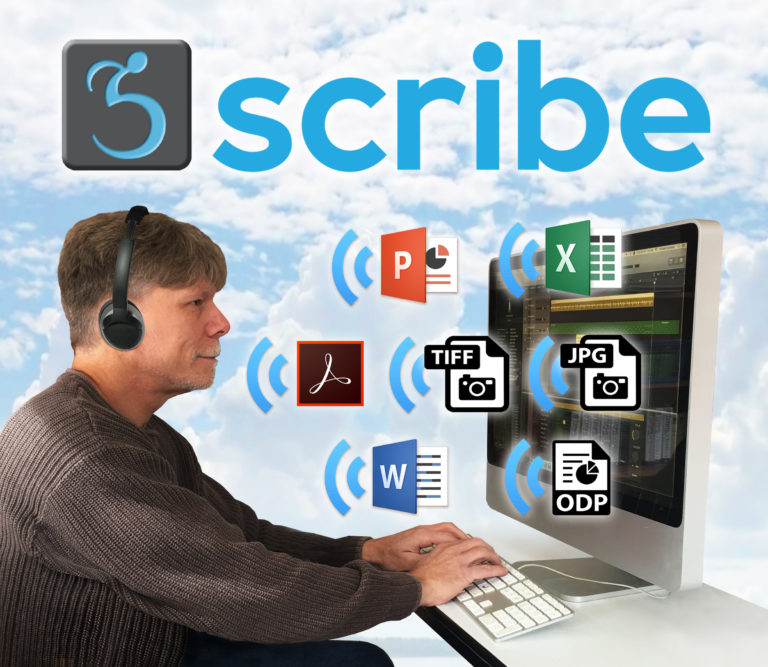次世代のアクセシブル・ドキュメント・テクノロジーの登場
If you’ve been wondering, “What happened to Calvo? Haven’t seen or heard from him for a while.” It’s because my partner in development crime Matt Campbell and I have been out of the public eye working on a new product that is paving the way to the next generation of solutions for people with print disabilities.
For more than two decades, Matt and I have been dedicated to making technology as usable as possible for blind people. And we’ve seen great progress during that time.

This fuels our resolve to continue towards the goal of universal access to information online.
As some of the top companies such as Apple, Google, Amazon, and Microsoft increasingly meet the needs of people with disabilities in their mainstream products, the requirement to use dedicated third-party access products is fading into history.
We, the people with disabilities, are approaching a greater level of equality with mainstream users every day as more and more products come with features we can use out-of-the-box.
But there’s an interesting twist to my investments of time and energy towards accessibility.
It never was about building an exclusive profit driven business model. My goal always has been, to fill the inaccessible gaps with affordable solutions that people with vision impairment can utilize successfully.
I’ve tried to encourage an environment that allows people with disabilities to enjoy a level playing field with their non-disabled peers.
And now, I’ve been out of the public eye working with an amazing team of developers headed up by Matt Campbell, creating new ways to make the online world even more inclusive, by finding ways to fill gaps in the current landscape.
Here’s what I mean…
We’re witnessing the birth of a new generation of accessible technologies.
The access technology industry has already developed consumer and corporate solutions designed to make information more accessible on desktops, laptops, mobile devices, consumer products, and the evolving voice assistant platforms.
What we need now is information to be made accessible before it reaches the print disabled consumer… straight from the platform or network itself.

What is the difference?
If online information is made accessible directly from the source, tools used by print disabled people can take on a simpler role. Now, they allow print disabled people to focus more on how they wish to consume the information, rather than if they can use the information at all.
That’s why you haven’t heard from me in a while.
We created a platform that introduces an entirely new generation of innovative and low-cost accessibility tools.
Organizations can effortlessly make information accessible before the print disabled person ever receives it, without even knowing a thing about accessible document creation. And do it before accessibility zealots come to get them.
We are all about an organization having an accessible document plan in the workflow.
Pneuma Solutions, my new company, is releasing the next generational tool, and I am eager to tell the world about it.
Introducing Scribe.
Powered by our Augmented Document Remediation technology, the Scribe platform permits organizations to provide extremely accurate, digitally remediated documents. Their information is made accessible straight from their public and private networks, to their print disabled consumers, citizens, students, and residents.
What’s more, print disabled individuals get accurate, accessible documents almost instantly… in a few clicks.
Pneuma Solutions will soon be releasing version 1.0 of Scribe, and another brick in the wall of inaccessible access to information will fall away.
I mean, let’s face it folks. The old ways just don’t scale well when you consider the torrent of information readily available to the non-disabled, armed with nothing more than a web browser.

Who is Scribe designed for?
Well, everybody that has information to share of course. But, more specifically Pneuma Solutions fulfills the need to obtain accessible information for federal, state and local governments, educational facilities, medical providers, financial institutions, libraries, businesses large and small, and more.
Well I guess that’s everybody, right?
Any organization that has printable information to be distributed digitally can incorporate Scribe in to the workflow, and deliver their documents in a format people with disabilities can read using the technologies they understand.
At last, people with a print disability can access the same information as their peers, in multiple formats of their choice.
But equal access shouldn’t mean budget breaking expense.
Now more than ever, the world of accessibility is fiscally conscious of their budgets, risk of litigation, and the time and cost spent to fulfill the need for accessible information.
Historically, access to documents relied on expensive and labor intensive certified human document remediation processing. The cost of this work runs as high as $15 to $20 per page.
This is not only budget unfriendly, but a barrier between organizations and the needs of their print disabled consumer’s.
Scribe, with its cloud based Augmented Document Remediation technology, will make your information accessible for literally pennies per page. Not tens of dollars per page.
Not only is it accessible, and available almost immediately after a couple simple clicks, but we’ve made it extremely affordable.
That’s why we’re so excited to release Scribe to the world.
There are still situations calling for Certified Human Remediation, but… not every single document requires a human’s touch for print impaired individuals to get the information they need, when they need it…
Does expensive, labor-intensive human remediation need to be the only solution?
That question was a driving factor in developing Scribe.
And the answer was, no.
It’s a fact, there aren’t near enough certified human document remediators to process the trillions of pages that make up the billions of inaccessible documents out there.
We needed a solution which helped eliminate the extensive backlog of documents which actually require Certified Human Remediation.
Plus, give print disabled individuals equal access to the information they need, in just seconds, anytime they need it.
Without breaking budgets.
In the “instant information” world we live in, print disabled people can’t afford the loss of productivity not having access to the documents they need.
Not getting information in time could mean a missed employment opportunity, best time to purchase property and goods, timely legal advice, or even jeopardize people’s health.
Here’s why it’s accessibility’s next generation.
Now, with Scribe, organizations can make 100% of their documents available 100% of the time to 100% of print impaired people everywhere.
All coming directly from their network. It only takes a few simple lines of HTML, and it’s done.
The print disabled user needs nothing more than a browser to access your printable content.
Welcome to the World of accessible documents on-demand.
With Scribe in the workflow, all it takes is a few simple clicks in a web browser, and the document is available to print disabled people almost instantly.
Once posted, the user can choose which file format they prefer to have the content delivered: HTML, PDF, MP3 (using text-to-speech), DAISY (text plus audio), EPUB, Microsoft Word DOCX, Braille (Grade 1, Grade 2, Unified English Braille), and large print.
Augmented Document Remediation (ADR) technology is the key.
The Scribe platform is powered by our proprietary Augmented Document Remediation (ADR) technology.
It virtually lifts text from a document, digitally analyzes it, and decides what that document is and its use. It then cleans it up, and re-formats it.
Scribe will recognize and fix headers, lists, tables and other elements when they aren’t tagged in the original document.
Scribe is even smart enough to input graphical alt descriptions when the original had none.
All without the human touch.
Scribe is not only accurate, but versatile.
Scribe’s output quality is so accurate, there’s no need for human remediation in most cases anymore.
Output from Scribe is 96% accurate on average as reported by users and in-house testing.
Scribe understands a staggering 18 different input file types, including all the standard image files. Then, it converts them to the file formats covered previously, quicker than an army of humans ever could.
Now you know why I’ve been out of the public eye lately.
Here’s my invitation to you.
As you can tell, I’m more than a little excited to usher in the next level of accessible document remediation.
Matt and I believe this is a long-awaited answer to what the Print Disabled community and organizations with publicly facing printable content have been looking for.
I invite you to take a closer look.
Just head to www.pneumasolutions.com/scribe and learn more about our exciting new platform.
